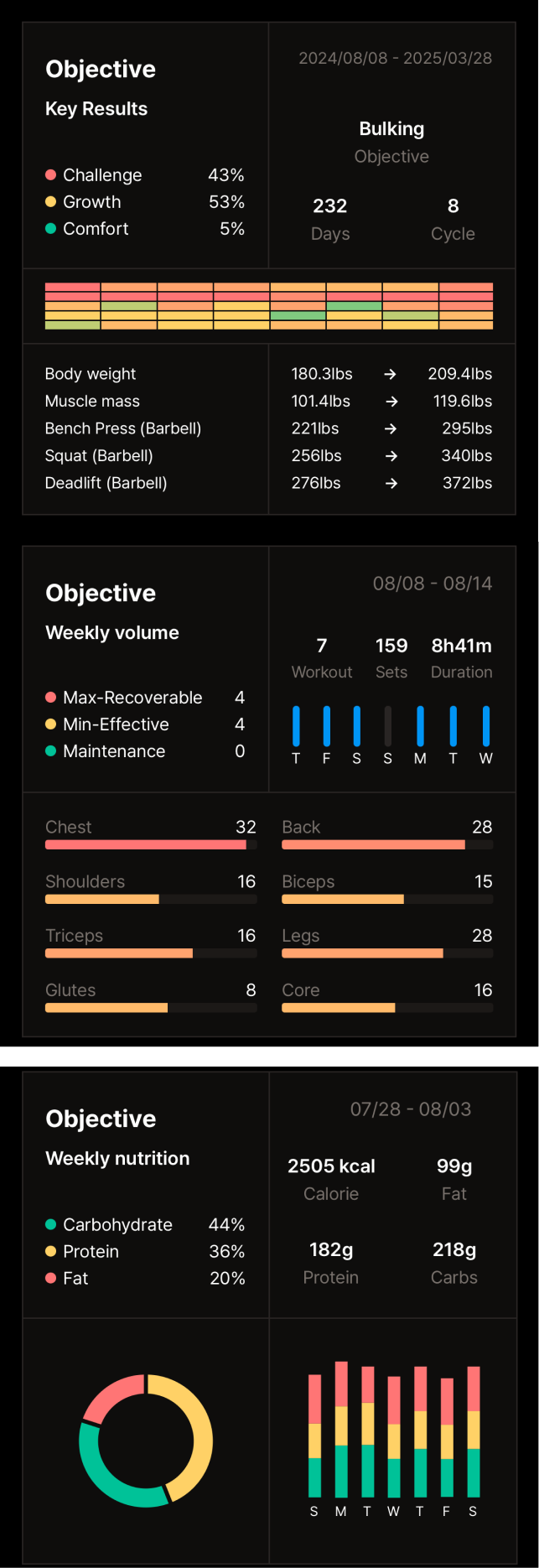Powerbuilding: Mixing Strength & Hypertrophy
Introduction
Imagine a workout regimen where you can boost your raw strength while simultaneously sculpting impressive muscle size. Sounds ideal, right? This article explores powerbuilding—a hybrid training approach combining the best of strength and hypertrophy training. It's the perfect solution for fitness enthusiasts aiming to gain both muscle mass and functional strength. Think of Dwayne "The Rock" Johnson – his physique showcases both significant muscle mass and incredible strength, a testament to the effectiveness of powerbuilding principles. With the rising popularity of versatile fitness programs, understanding powerbuilding will empower you to enhance your workouts, catering to both strength and aesthetics.
What is Powerbuilding?
Understanding the Basics
Powerbuilding is a training methodology that blends the core principles of powerlifting and bodybuilding. Powerlifting focuses on maximizing strength in three main lifts: the squat, bench press, and deadlift. Bodybuilding, on the other hand, prioritizes muscle growth (hypertrophy) and aesthetic physique development. Powerbuilding strategically combines these two disciplines. It emerged as athletes and fitness enthusiasts sought a more balanced approach, desiring both strength gains and visible muscle development.
Benefits of Powerbuilding
Powerbuilding offers a unique blend of benefits. It promotes both muscle growth and strength gains concurrently, making it a highly efficient training method. Its versatility allows for customization based on individual goals, whether you prioritize strength, size, or a balanced combination. Furthermore, powerbuilding can enhance athletic performance by improving power output and overall physical health through increased muscle mass and strength.
Key Principles of Powerbuilding
Balancing Strength and Size
A typical powerbuilding workout schedule involves a strategic split between strength-focused days and hypertrophy-focused days. A common approach is a 4-day split, with two days dedicated to strength training and two days focused on hypertrophy. Progressive overload is paramount in powerbuilding. This principle involves gradually increasing the weight, reps, or sets you lift over time. This continuous challenge forces your muscles to adapt and grow stronger and larger.
Exercise Selection
Compound movements form the foundation of powerbuilding. These exercises engage multiple muscle groups simultaneously, maximizing strength and muscle development. Key compound movements include squats, deadlifts, bench presses, overhead presses, and rows. Accessory work complements compound movements by targeting specific muscle groups for enhanced hypertrophy. Examples include bicep curls, triceps extensions, calf raises, and lateral raises. ## Crafting an Effective Powerbuilding Routine
Structuring Your Workout Plan
A sample weekly powerbuilding routine for beginners and intermediates could involve:
- Monday: Strength - Squat, Bench Press, Accessory work (Triceps)
- Tuesday: Hypertrophy - Back and Biceps
- Wednesday: Rest
- Thursday: Strength - Deadlift, Overhead Press, Accessory work (Shoulders)
- Friday: Hypertrophy - Chest and Triceps
- Weekend: Rest or Active Recovery
Remember, flexibility is key. Adjust this routine based on your individual goals, recovery capacity, and progress. ### Nutrition and Recovery
Proper nutrition is crucial for fueling your powerbuilding workouts and supporting muscle growth. Prioritize a diet rich in protein (aim for 1-1.5 grams of protein per pound of body weight) to facilitate muscle repair and growth. Consuming sufficient carbohydrates provides energy for intense training, while healthy fats support hormone production and overall health. Adequate sleep and rest days are essential for maximizing results and preventing injuries. Aim for 7-9 hours of quality sleep per night and incorporate rest days into your weekly schedule to allow your muscles to recover and rebuild.
Common Challenges and Solutions
Overcoming Plateaus
Plateaus are inevitable in any training program. If your progress stalls, consider adjusting your workouts. You can vary the exercises, rep ranges, sets, or rest periods to challenge your muscles in new ways. Maintaining a positive mindset and mental toughness is equally important. Remember that progress isn't always linear, and consistency is key to overcoming challenges.
Avoiding Overtraining
Overtraining can hinder your progress and increase your risk of injury. Signs of overtraining include decreased performance, persistent muscle soreness, fatigue, irritability, and difficulty sleeping. To prevent overtraining, ensure a healthy balance between workout intensity and rest. Listen to your body and don't hesitate to take extra rest days when needed. Proper nutrition and adequate sleep are also crucial for preventing overtraining.
Conclusion
Powerbuilding offers a unique approach to fitness, emphasizing both strength and size. By following a structured routine, prioritizing progressive overload, and focusing on both compound and accessory movements, you can achieve significant gains in both strength and muscle mass. Maintaining a balanced approach, prioritizing nutrition, and allowing for adequate rest and recovery are essential for long-term success.
Call-to-Action
Ready to experience the benefits of powerbuilding? Try incorporating the principles and sample routine outlined in this article into your fitness journey. Share your experiences and progress in the comments below. For those seeking more advanced techniques and workout strategies, explore our additional resources on powerbuilding programs and personalized training plans. Don't hesitate to delve deeper into the world of powerbuilding and unlock your full athletic potential! We encourage you to research different powerbuilding routines and tailor them to your individual needs and goals. Remember that consistency and dedication are key to achieving your desired results.

